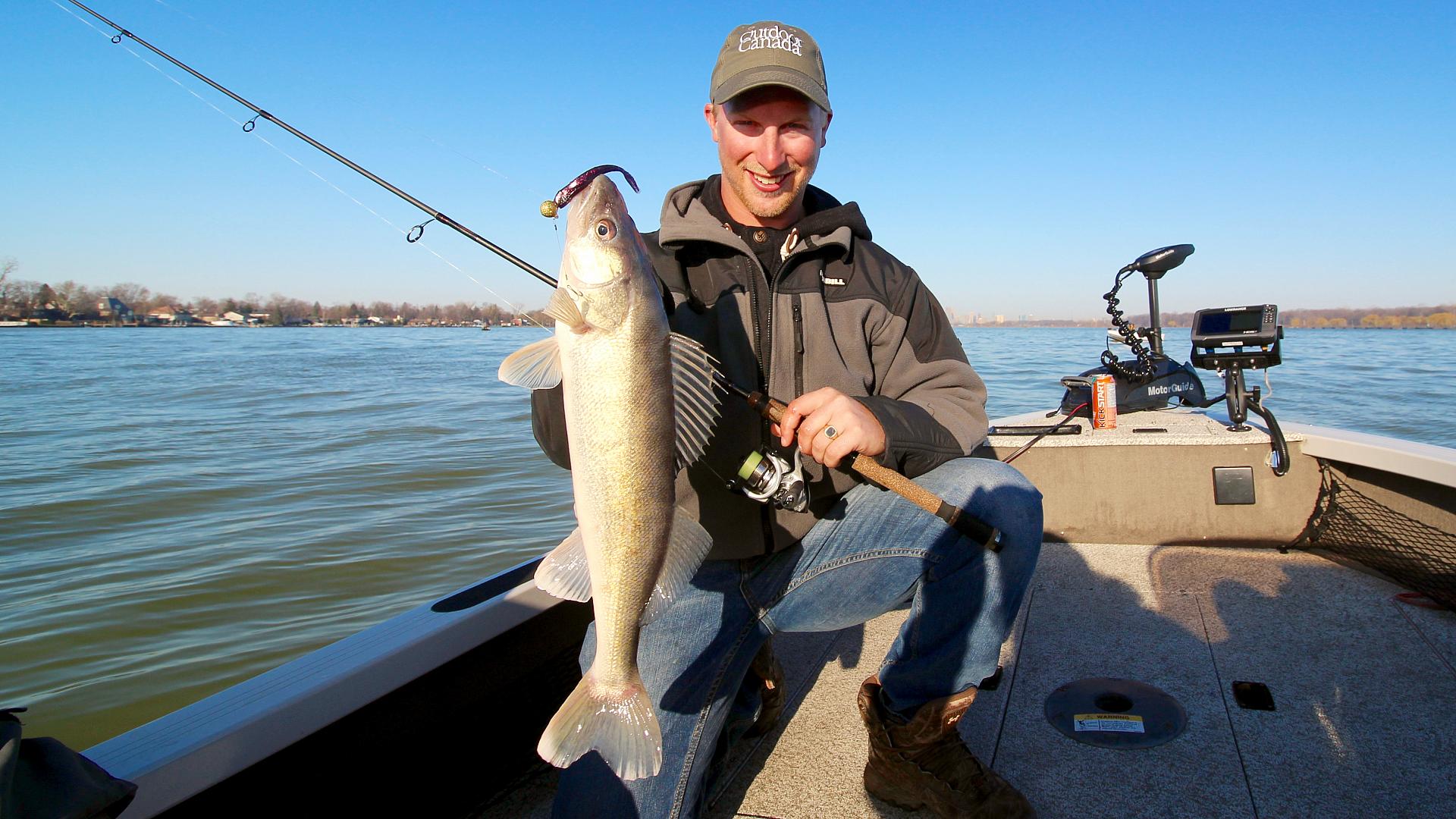Walleye jigging secrets
Gord Pyzer's all-time top 5 jig tactics for walleye
Advertisement
4. Work the waves
Remember the last time you laid out an anchor and jigged for walleye? I bet you can’t. Anchoring is a lost art, yet in many situations it’s the best approach for presenting a jig and catching enormous ‘eyes. That’s what walleye ace Ted Stewner did in October 2004 at the Walleye Championship in Pine Falls, Manitoba. The waves were gigantic out on massive Lake Winnipeg, but they were only half the problem—the other half was the wall of water rushing into the lake from the Winnipeg River. Stewner took care of that, though. He had welded so much additional iron onto his already substantial anchor that it took both him and his partner to drop it overboard. And it worked. He won the title.
Not that you need such nightmarish conditions for this technique to be successful. All you need is moving water in the form of wind, waves or current. And the technique works just as well in the spring and summer as it does in the fall. Simply anchor upstream from the spot where the walleye are concentrated and cast out a properly weighted jig—one that will quickly fall to the bottom and just barely lie there without being swept away—tipped with a minnow or soft-plastic. Indeed, when you’ve picked the properly weighted jig, every time you slightly lift it off the bottom, the current will cause it to flutter, tremble and tumble downstream (below).
Advertisement

In currents like this, walleye are normally glued to the bottom. They also lounge around any current-buffeting structure and cover they can find, such as the rim of a depression, an isolated rock or a submerged tree. And they almost always position themselves so they’re facing into the current. Now, imagine what must go through a walleye’s mind when it spots a jig tipped with a minnow or soft-plastic slowly quivering and tumbling toward it. The fish can’t believe its good fortune. It simply opens its mouth wide and clamps down hard.
A standard six- to 6 1/2-foot, medium- or medium-heavy-action spinning rod rigged with eight-pound mono is ideal for this presentation. If the current is particularly heavy, though, use FireLine or SpiderWire because the smaller diameter line cuts through the water better, and gets the jig to the bottom easier.
Advertisement
Tip
When anchoring, most anglers typically opt for minnows as the bait of choice. However, soft-plastics are often a better option in faster-moving water; they impart more action in quicker current, while live bait is often overpowered.
Advertisement

